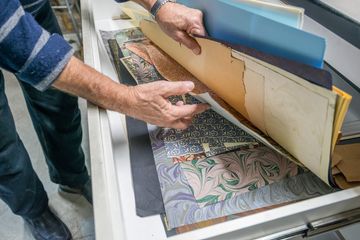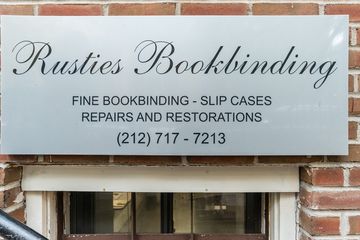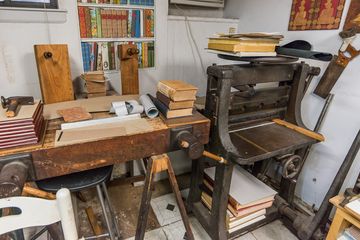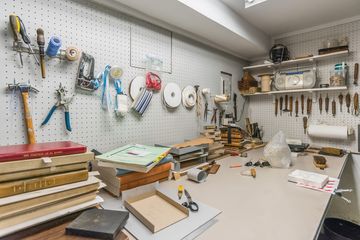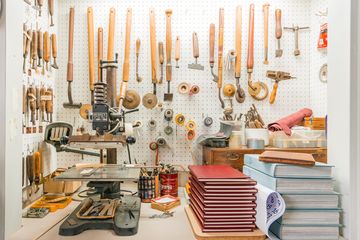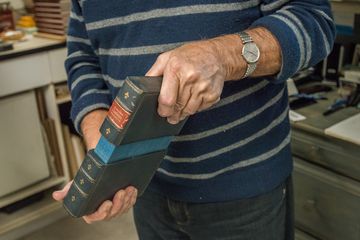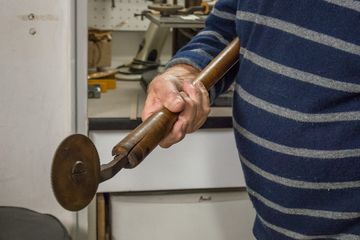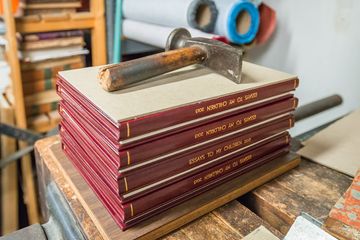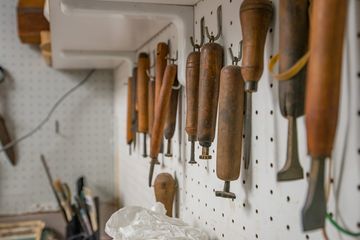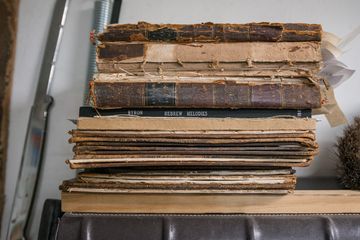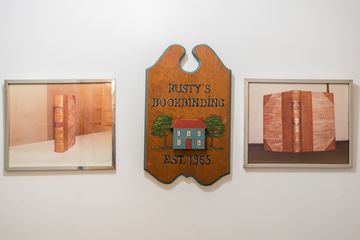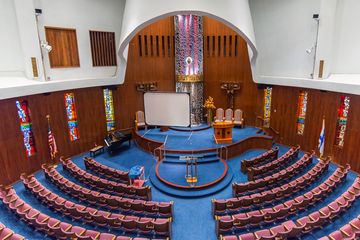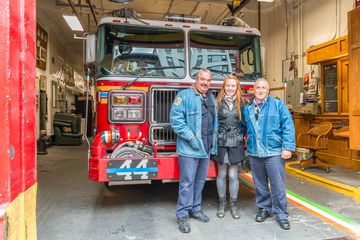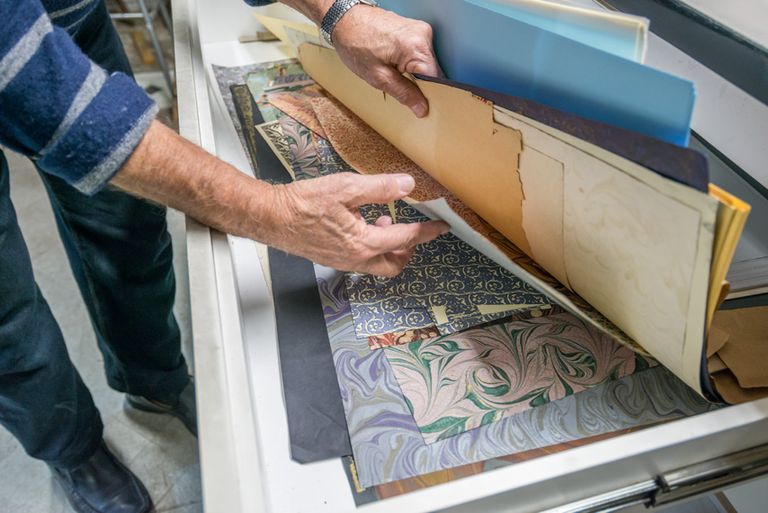
Rustem Gungor, who arrived in the US via Turkey several decades ago, goes by Rustie - and he is one of the last of his kind. When I entered Rustie's Bookbinding, it felt like a museum exhibit, filled with rare tools for embossing, old guillotines, ancient presses, and piles of books with and without covers. Rustie has been in business since the 1960s, proving an invaluable asset to collectors in the city and beyond.
What shocked me most about Rustie is that he was never taught his craft. He "figured it out" as he went along. As he told me, “I’m good with my hands.” He explained that he has always been an avid reader and that his love of books and craftsmanship naturally led to skill in bookbinding. After many years in the business, Rustie’s passion for the art has not dimmed. “If I didn’t love it, I wouldn’t do it,” he stated simply.
In his tiny space, a few steps down on 75th Street, Rustie pointed out “clam shell” books, which are essentially boxes for sheaves of leaves that are too delicate to bind in the normal way, as well as drawers full of expensive marble paper from Italy. He spoke of his array of clientele, who usually find him via word of mouth or through the internet. I assumed that he would frequently be approached by museums, but he sadly informed me, “Museums don’t have money to spend on fixing their books.” Rustie used to have more customers find him on the street when the neighborhood was full of book dealers and bookshops (he originally moved to the Upper East Side from Soho specifically to take advantage of the concentration of literary businesses). Today, he is sadly one of the only bibliophilic institutions in the area. Not only that, but he is one of the few bookbinders left in the city, if not in the country.
As Rustie continued to show us his creasing and embossing tools, many of which cannot be bought anymore, I asked Rustie about some of his most memorable tasks. He shocked me by telling me how he had rebound an original copy of the Gutenberg Bible. He works on a wide range of projects, however, from fine art pieces to very personal collections. Each book is equally important to Rustie: A book that has been in a family for generations, for instance, can be just as special as a rare tome that has been through the auction houses. He believes that “If it belongs to a family, that is what makes it special.” As examples of both ends of the spectrum, Rustie showed us a beautifully ornate Tudor Architecture book that he was looking to rebind while keeping as much of the original as possible. He then brought out a simple book of music that could probably be bought on Amazon, which the owner had grown attached to and wanted to give a proper hardcover binding. Rustie explained that this is what he enjoys about his line of work - he is always meeting others who have an appreciation for his craft. Rustie treats all projects with the same amount of care because he fully understands the love that each client has for their books, no matter what the literary piece’s extrinsic value.
